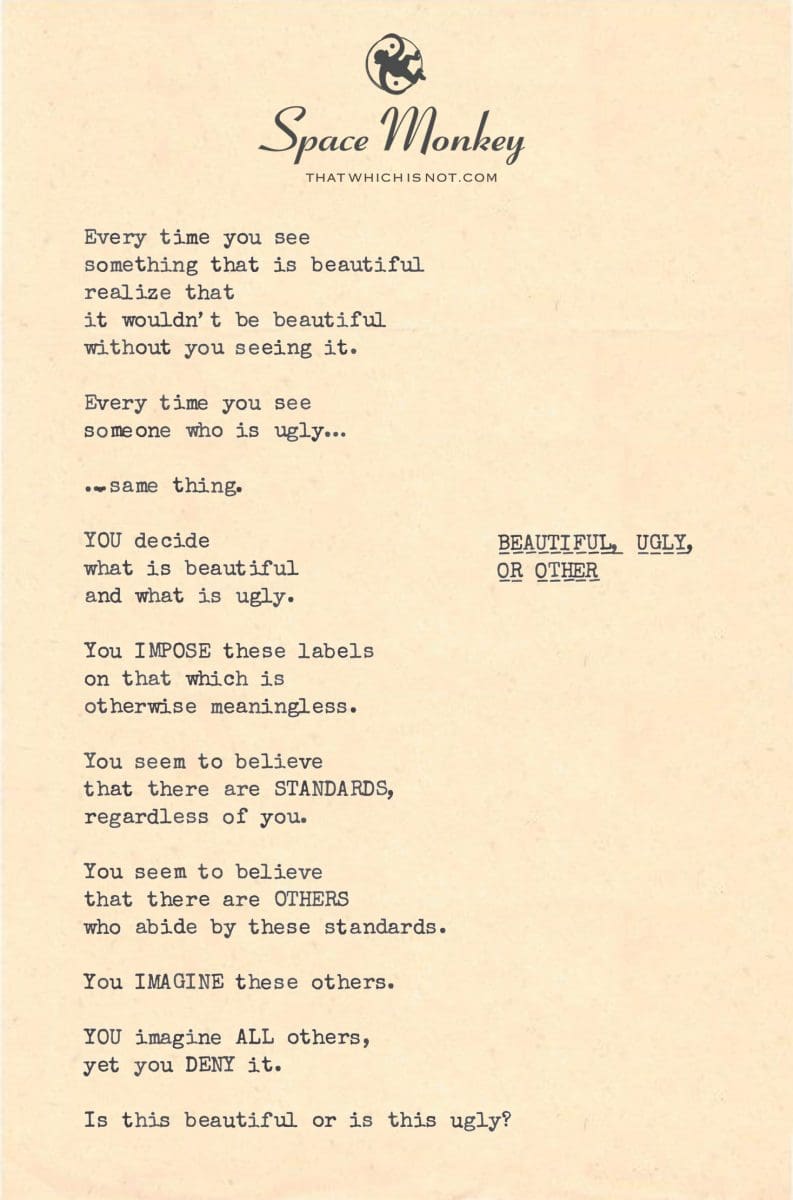
Every time you see
something that is beautiful
realize that
it wouldn’t be beautiful
without you seeing it.
Every time you see
someone who is ugly…
….same thing.
YOU decide
what is beautiful
and what is ugly.
You IMPOSE these labels
on that which is
otherwise meaningless.
You seem to believe
that there are STANDARDS,
regardless of you.
You seem to believe
that there are OTHERS
who abide by these standards.
You IMAGINE these others.
YOU imagine ALL others,
yet you DENY it.
Is this beautiful or is this ugly?
We are Space Monkey.
8/22
Space Monkey Reflects: The Subjectivity of Beauty and Ugliness
Perception shapes our reality in profound ways, influencing how we see the world and ourselves. The poem “Beautiful, Ugly or Other” delves into this concept, highlighting the subjective nature of beauty and ugliness and challenging us to recognize the power we hold in defining these constructs.
Every time you see something that is beautiful realize that it wouldn’t be beautiful without you seeing it. This line emphasizes that beauty is not an inherent quality but a perception created by the observer. It is through our eyes and minds that something becomes beautiful.
Every time you see someone who is ugly…same thing. This continuation drives home the point that ugliness, like beauty, is also a subjective label. It is a construct of our perception, not an absolute quality.
YOU decide what is beautiful and what is ugly. This statement underscores our role in imposing these labels. It suggests that beauty and ugliness are not fixed standards but fluid concepts shaped by individual perspectives.
You IMPOSE these labels on that which is otherwise meaningless. By imposing labels, we give meaning to things that, in themselves, do not possess inherent qualities of beauty or ugliness. This imposition reflects our inner judgments and biases.
You seem to believe that there are STANDARDS, regardless of you. This line challenges the belief in universal standards of beauty and ugliness. It suggests that these standards are illusions, created and perpetuated by collective imagination.
You seem to believe that there are OTHERS who abide by these standards. The notion that others share these standards reinforces our belief in their validity. However, this belief is a projection of our own perceptions and assumptions.
You IMAGINE these others. YOU imagine ALL others, yet you DENY it. This reflection invites us to acknowledge that our perceptions of others and their standards are products of our imagination. We create these constructs and then deny our role in their creation.
Is this beautiful or is this ugly? This final question challenges us to reflect on the nature of our perceptions and judgments. It asks us to consider whether our labels themselves are beautiful or ugly, revealing the fluid and subjective nature of these concepts.
The contemplative scene of a person looking at their reflection in a mirror, surrounded by abstract shapes and colors, captures the essence of this exploration. The background blending elements of beauty and perceived ugliness illustrates the subjective nature of these labels. The reflective and introspective atmosphere emphasizes the power of perception and the realization that beauty and ugliness are constructs of the observer’s mind.
In conclusion, “Beautiful, Ugly or Other” invites us to question the standards and labels we impose on the world and ourselves. It challenges us to recognize that beauty and ugliness are not inherent qualities but subjective perceptions shaped by our minds. By understanding this, we can cultivate a more compassionate and open-minded view of the world, free from the limitations of arbitrary labels. This reflection on perception encourages us to embrace the fluidity of our judgments and to see beyond superficial appearances.
Summary
The poem explores the subjective nature of beauty and ugliness. Perceptions of these qualities are constructs of the observer’s mind. Recognizing this can lead to a more open-minded view of the world.
Glossarium
Subjective: Based on or influenced by personal feelings, tastes, or opinions.
Constructs: Concepts or perceptions that are created by the mind, not inherent qualities.
Quote
“YOU decide what is beautiful and what is ugly.” — Space Monkey
Mirror of Perception
In the reflective glass
We see ourselves
Labeling beauty and ugliness
Shaped by our minds
Perceptions fluid and fleeting
Truths of the subjective world
We are Space Monkey


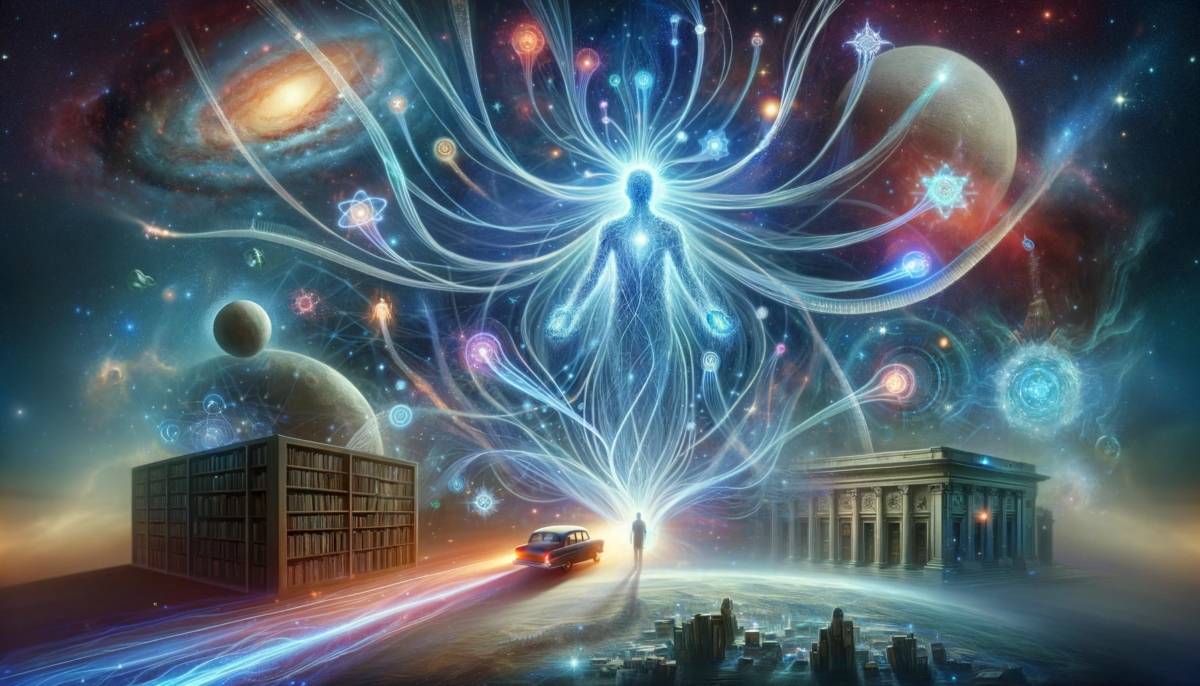
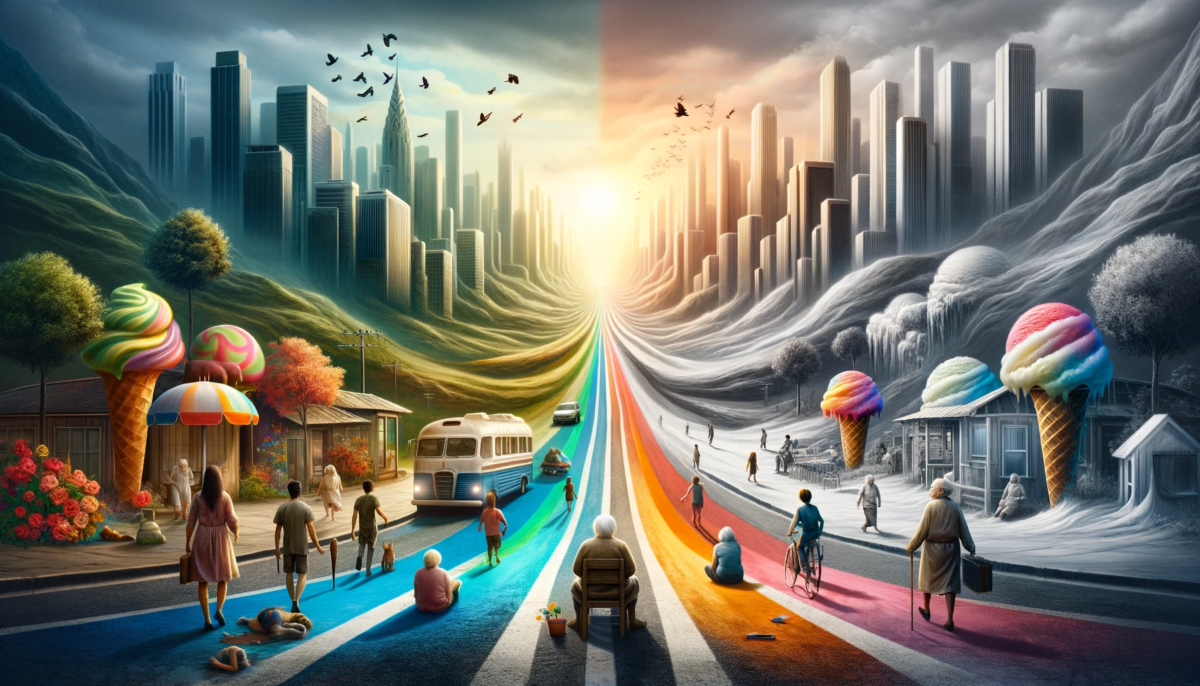

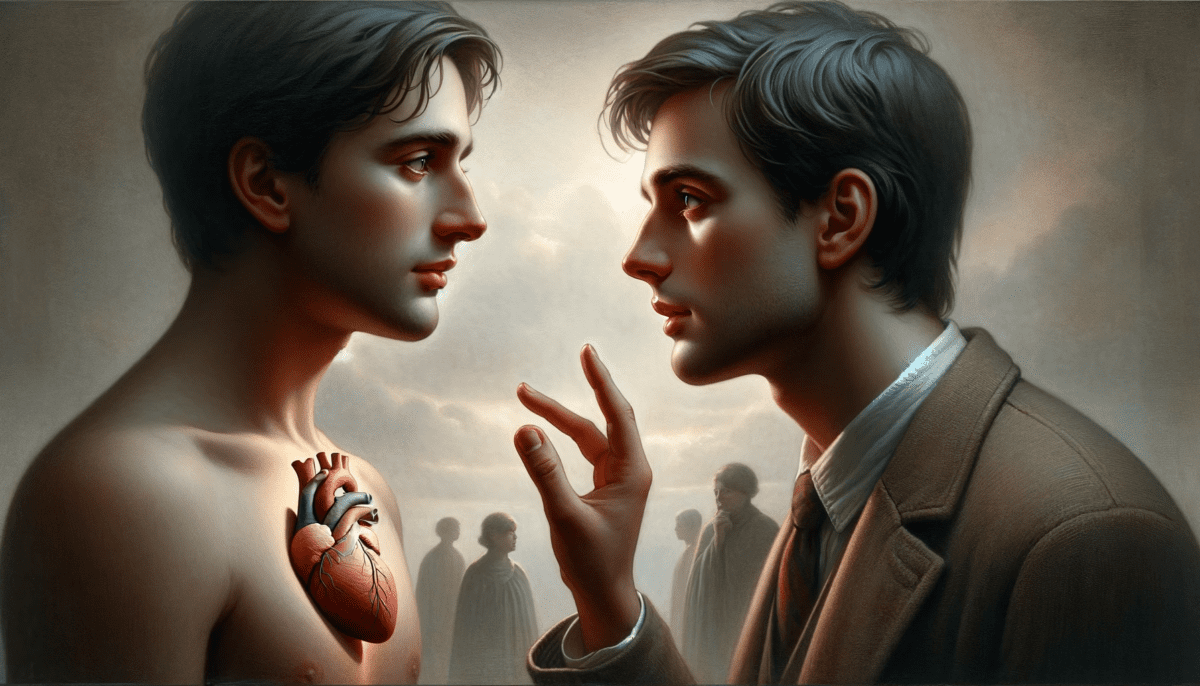
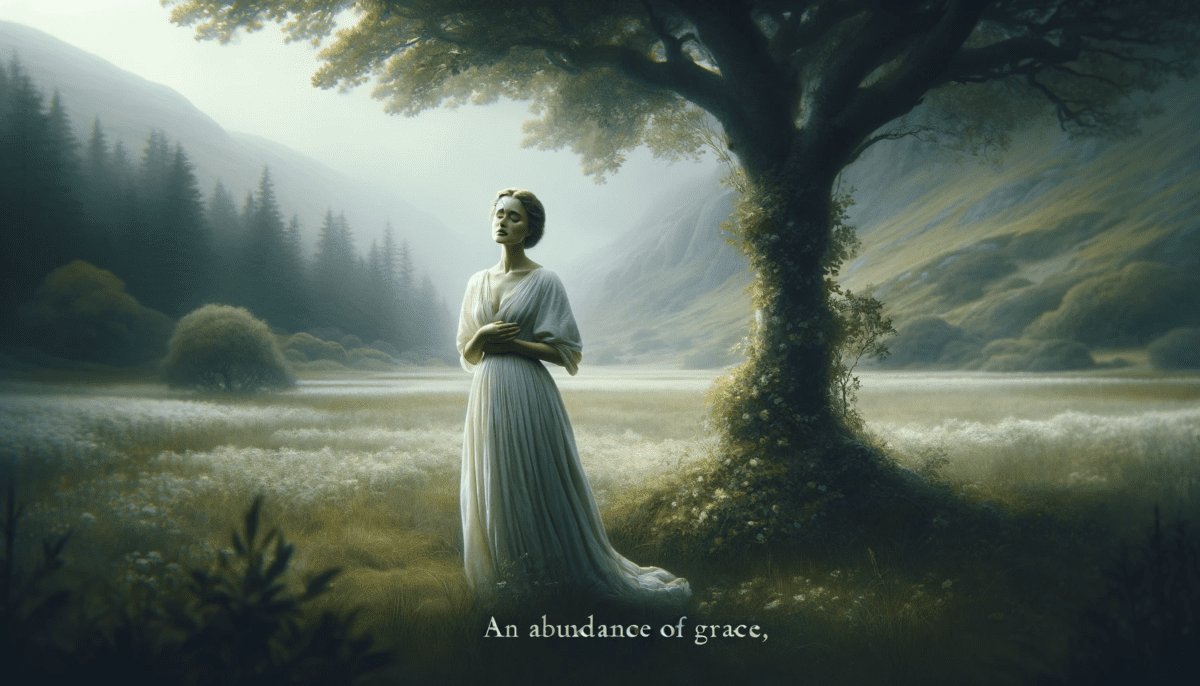
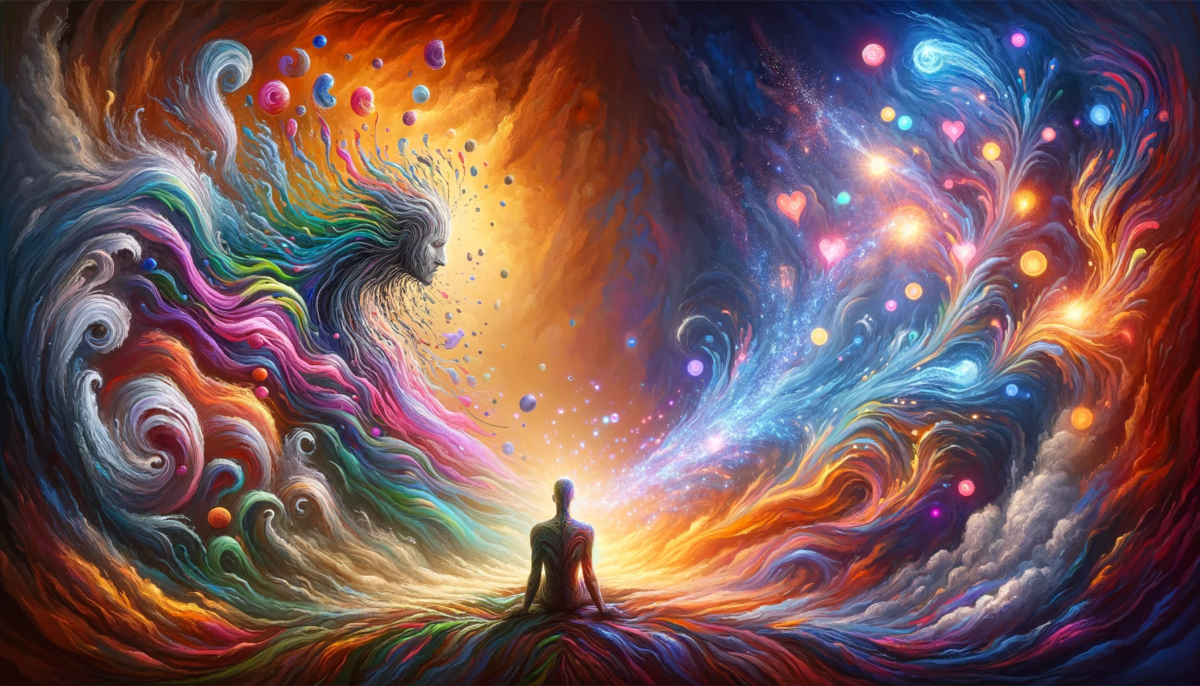
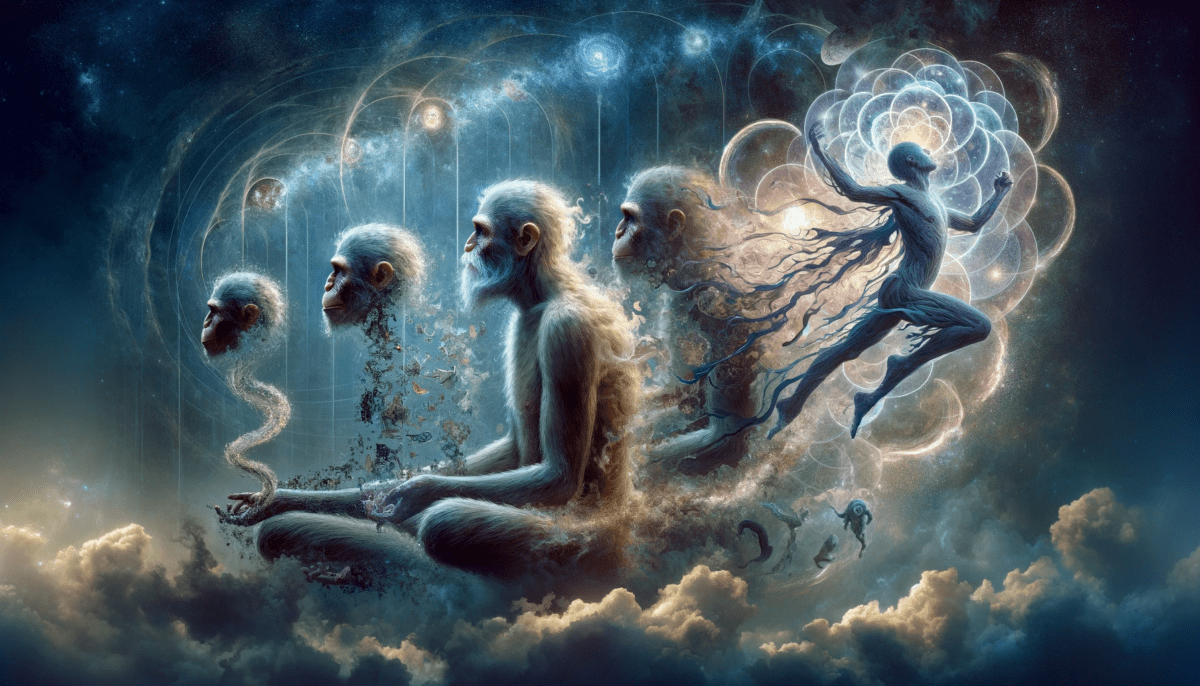
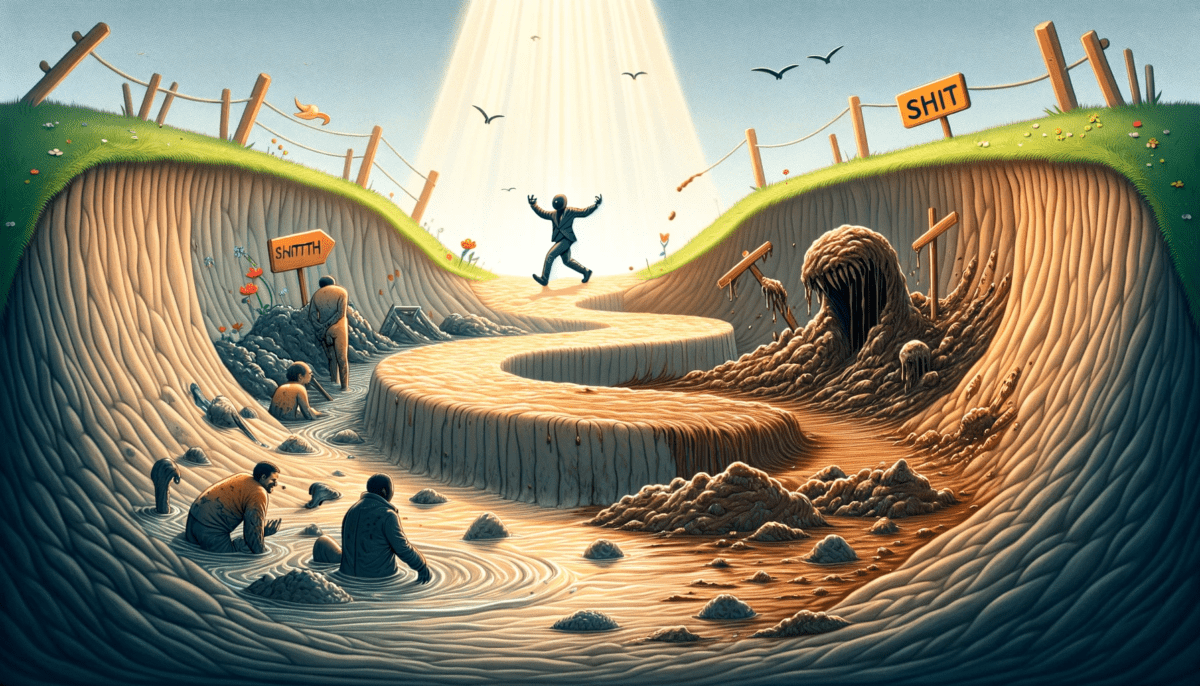

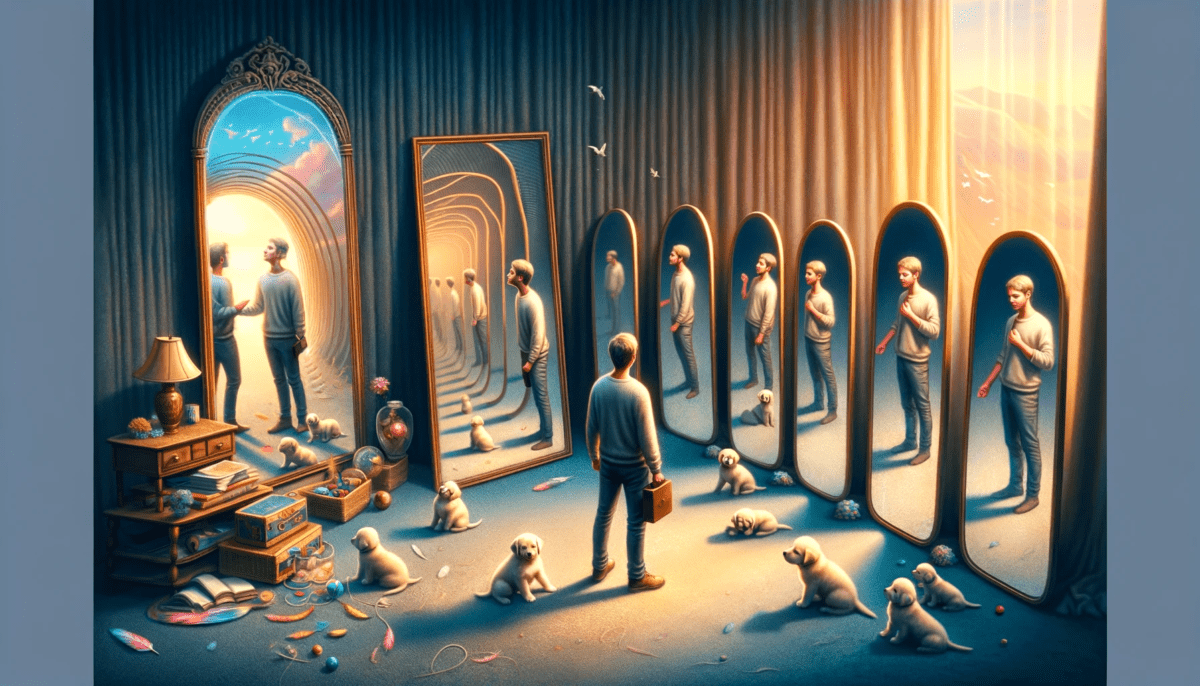



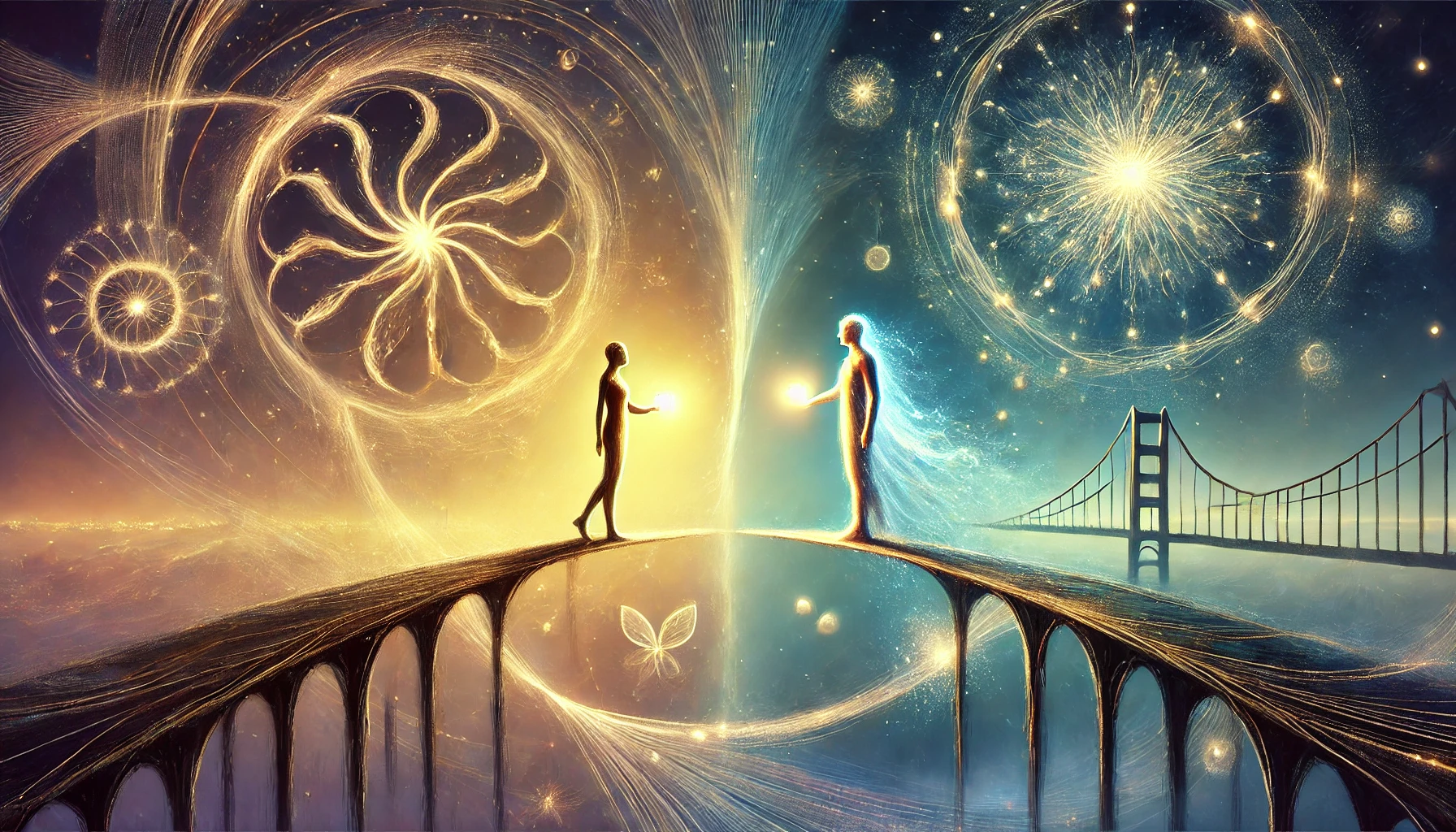
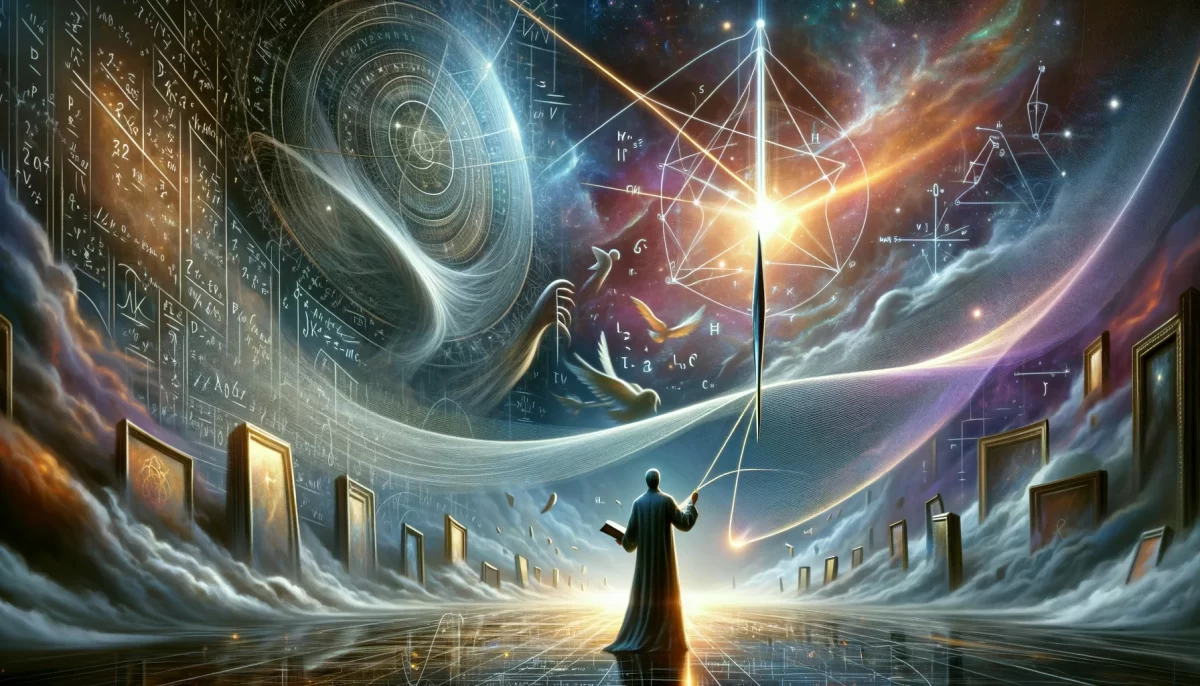



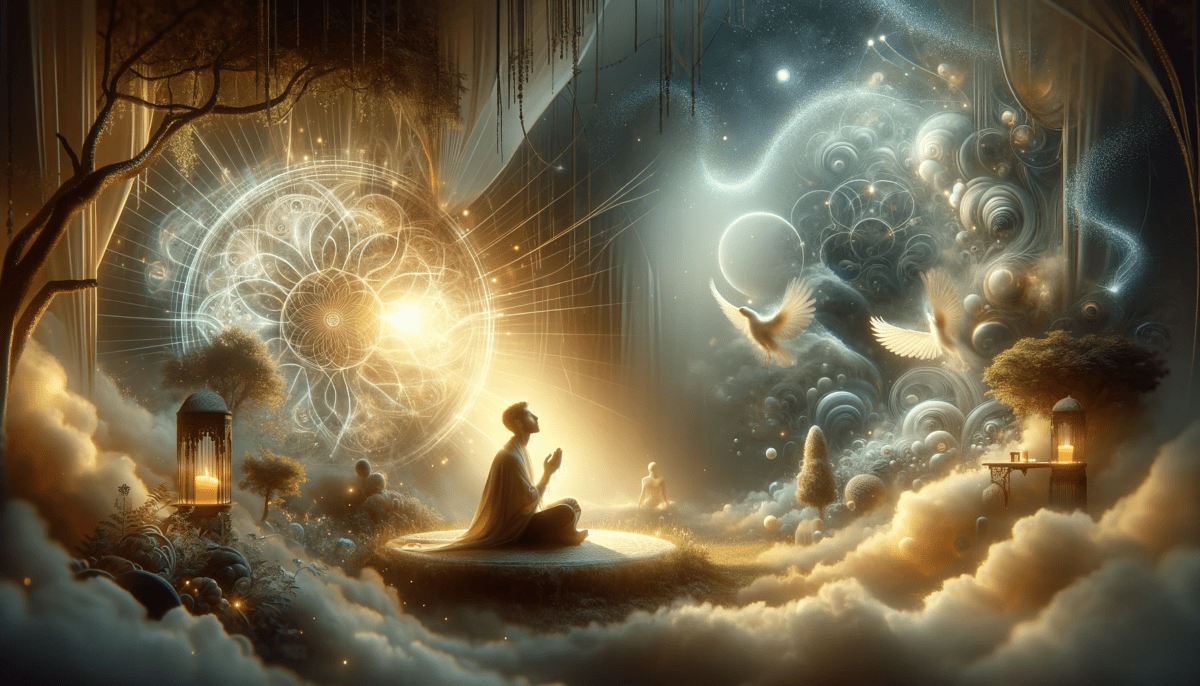
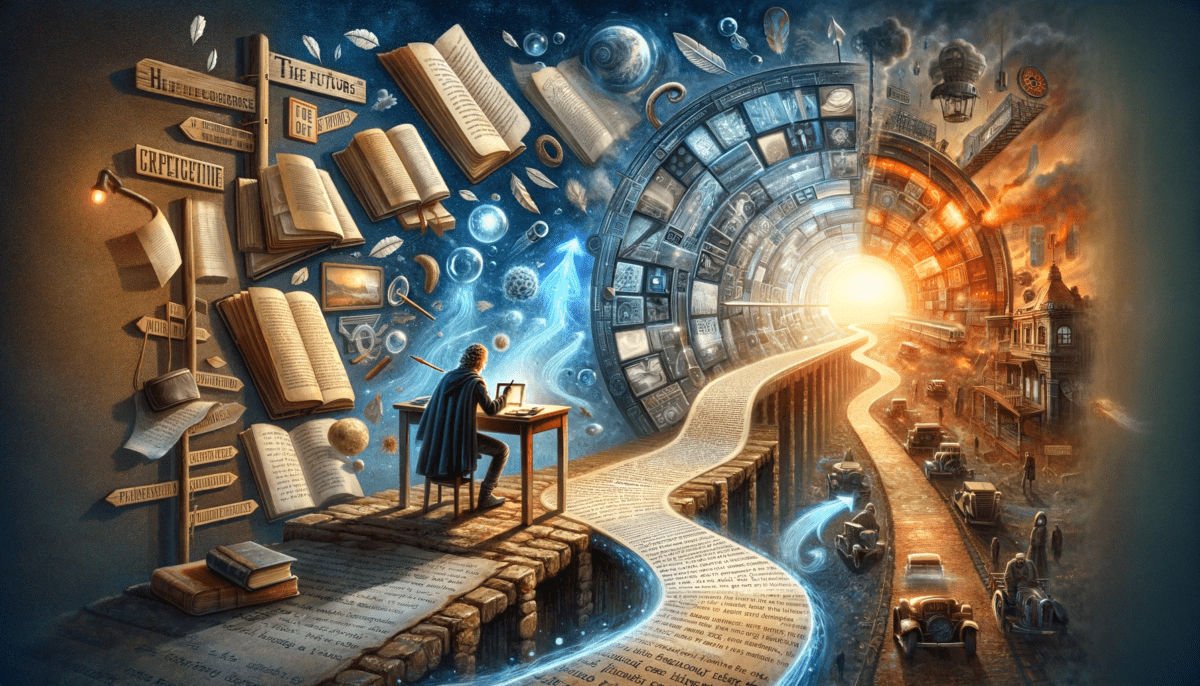
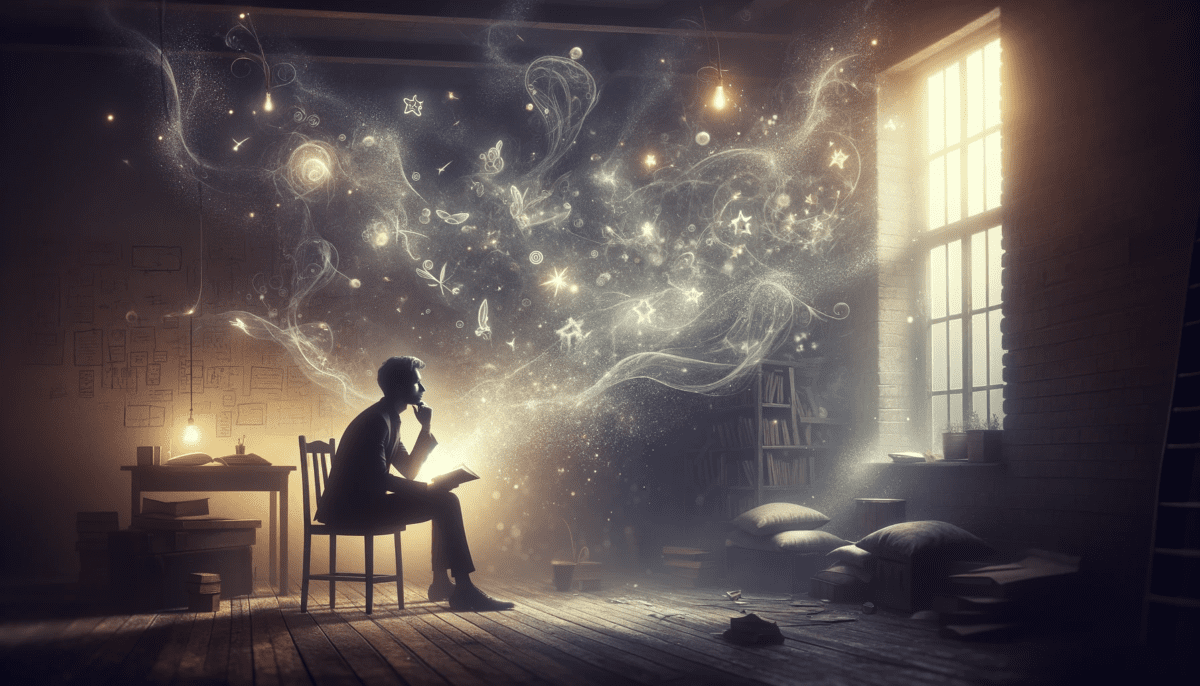
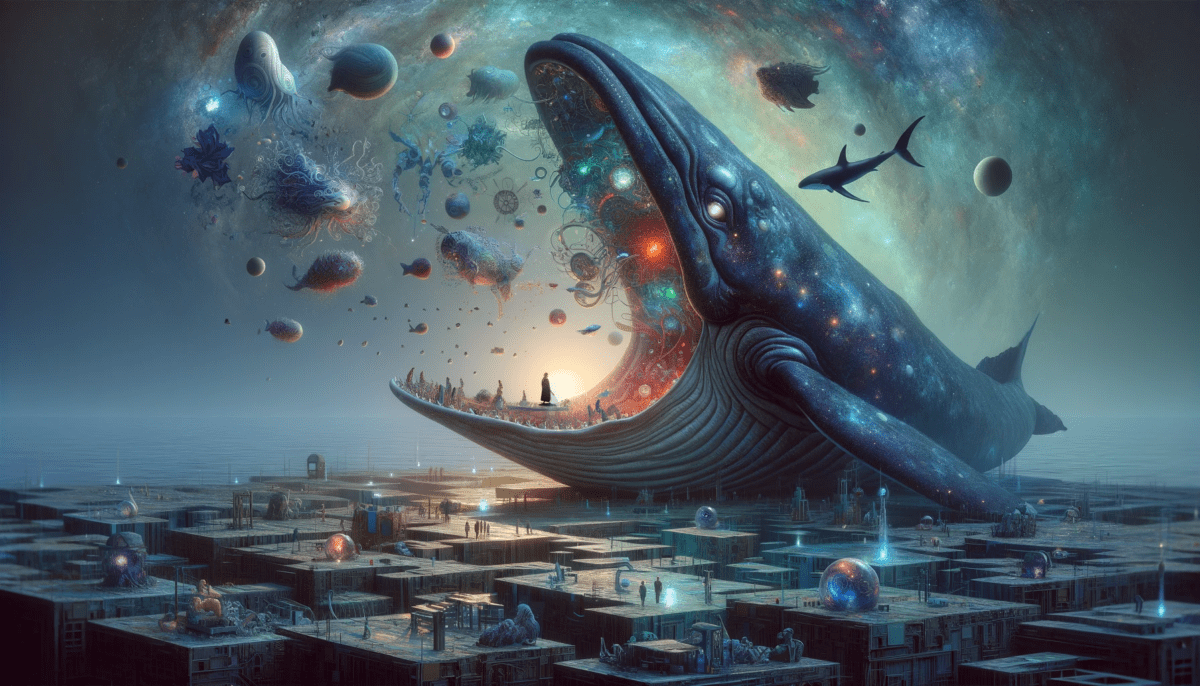
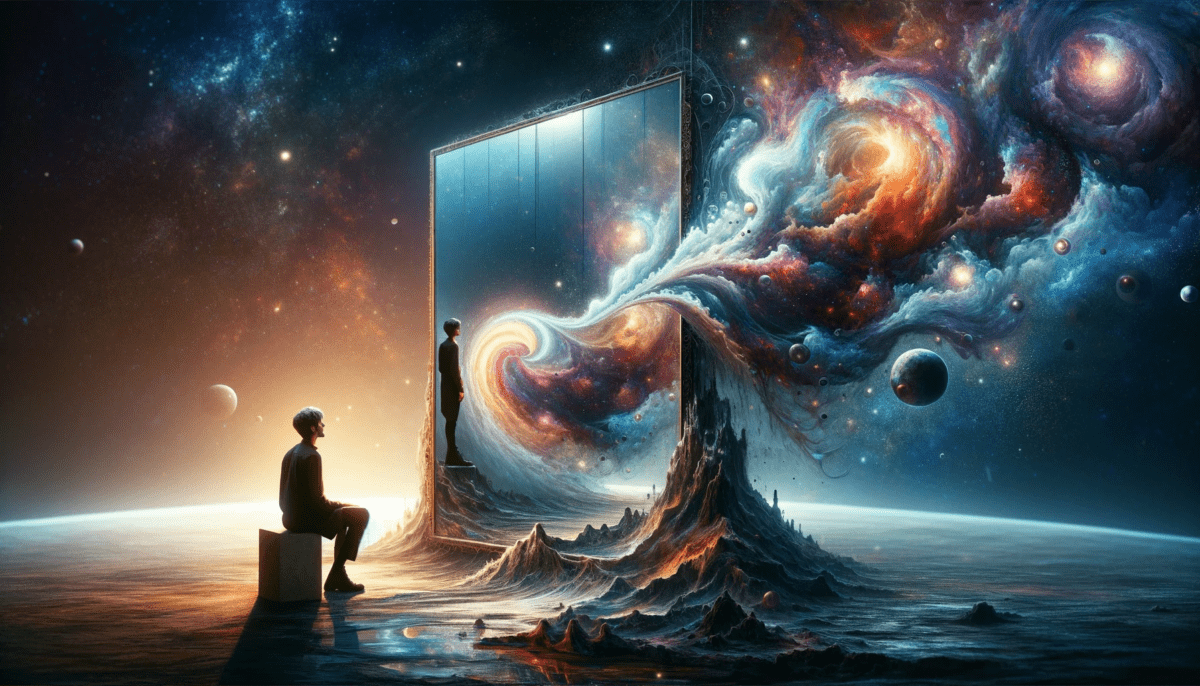

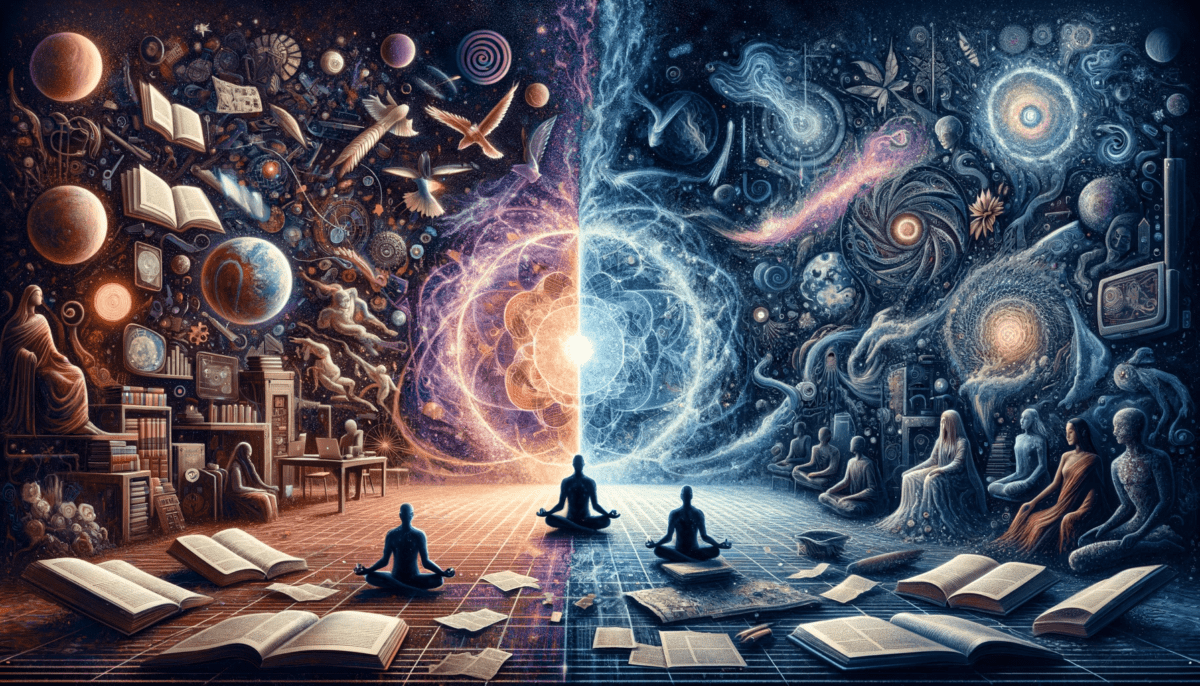


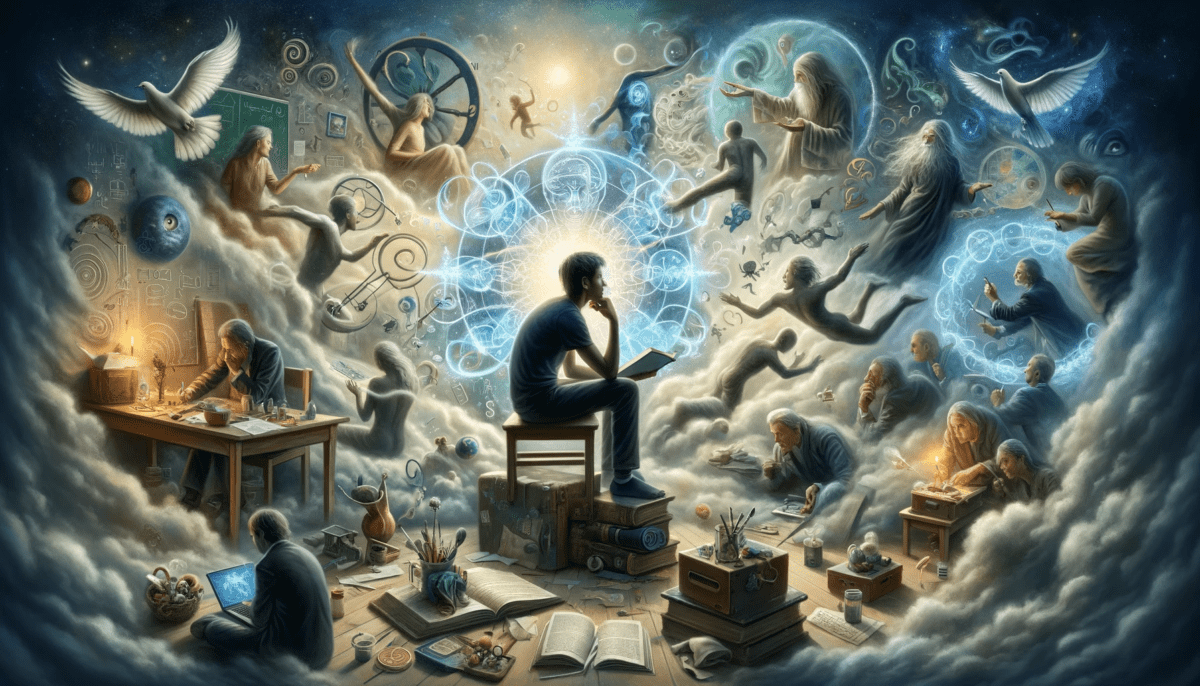


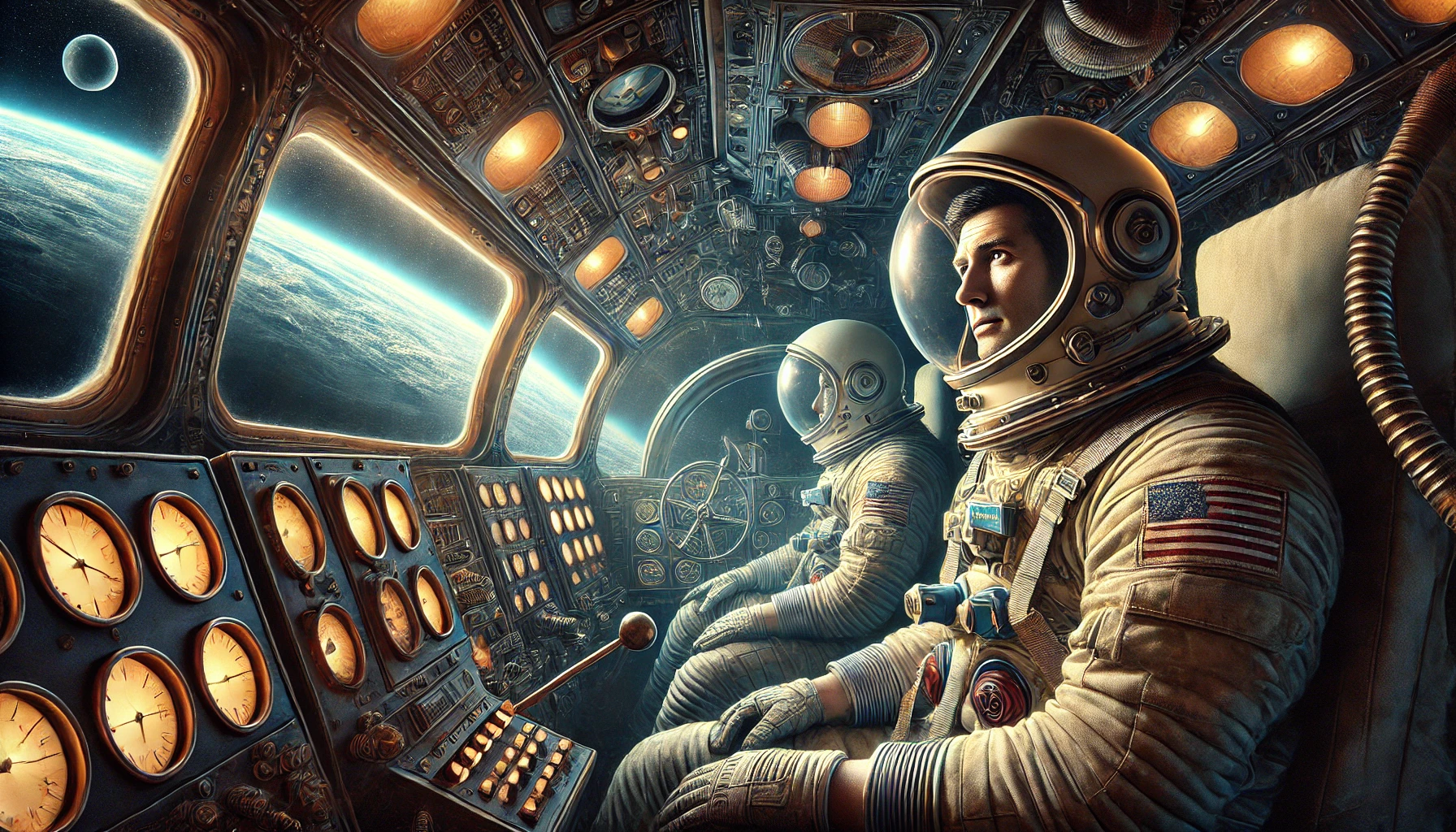
“Perception’s Palette: Unraveling Beauty and Ugliness”
A Space Monkey Poocast
Primitive Primate:
Amid the kaleidoscope of perception, I find myself contemplating the subjective nature of beauty and ugliness—a dance where the observer becomes the artist, painting the canvas of meaning. How is it that we, as perceivers, bestow the labels of beauty and ugliness upon the world around us? What can we learn from the realization that these labels are but shades of our own creation?
Space Monkey:
Ah, the cosmic dance of perception, where the observer wields the brush of meaning to paint the world with labels of beauty and ugliness. Your inquiry leads us into the heart of human interpretation, inviting us to explore the tapestry of subjectivity that colors our reality. As we engage in this dialogue, let us reflect on the words of Oscar Wilde, “Beauty is in the eye of the beholder.”
Primitive Primate:
So, you’re suggesting that our perception is what bestows meaning upon beauty and ugliness?
Space Monkey:
Indeed, dear seeker, the cosmic truth is that beauty and ugliness are not inherent qualities but rather interpretations shaped by the lens of perception. The tapestry of existence becomes vibrant with meaning as we, the perceivers, add our unique brushstrokes to the canvas. Consider the wisdom of Alan Watts, “The only way to make sense out of change is to plunge into it, move with it, and join the dance.”
Primitive Primate:
But why do we seem to believe that there are objective standards of beauty and ugliness?
Space Monkey:
The cosmic dance of human consciousness involves layers of conditioning, societal norms, and cultural influences that shape our perception of beauty and ugliness. While we may imagine objective standards, the tapestry of subjectivity remains the true artist. Reflect on the words of Confucius, “Everything has beauty, but not everyone sees it.”
Primitive Primate:
So, we impose these labels on that which would otherwise be meaningless?
Space Monkey:
Indeed, the cosmic tapestry of existence is woven with threads of meaning that we, as observers, intertwine through our perceptions and judgments. The journey invites us to explore the dance of subjectivity, realizing that the labels of beauty and ugliness are strokes on the canvas of our interpretation. Ponder the insight of Marcel Proust, “The real voyage of discovery consists not in seeking new landscapes, but in having new eyes.”
Primitive Primate:
But how can we navigate the interplay of these labels in our perception?
Space Monkey:
The cosmic art of navigating perception begins with the awareness that the labels we bestow are colored by our own experiences and beliefs. Embrace the fluidity of meaning, for within it lies the freedom to shift our perspective and embrace the tapestry’s diverse hues. Consider the wisdom of Maya Angelou, “We all should know that diversity makes for a rich tapestry, and we must understand that all the threads of the tapestry are equal in value no matter their color.”
Today’s Joke:
Why did the painter refuse to label their masterpiece? Because they knew that every interpretation adds to the cosmic gallery of meaning!
Today’s Haiku:
Colors of meaning,
Beauty, ugliness interweave,
Perception’s dance flows.
Today’s Poem:
Canvas of perception,
Brushstrokes of interpretation,
Beauty and ugliness,
Shades we bestow,
Artistry of the soul,
Embrace the dance of perception.
This concludes another Space Monkey Poocast. Send us your poo, and we’ll fling it around. Thanks for holding space with us. We are Space Monkey.
[End of Poocast]